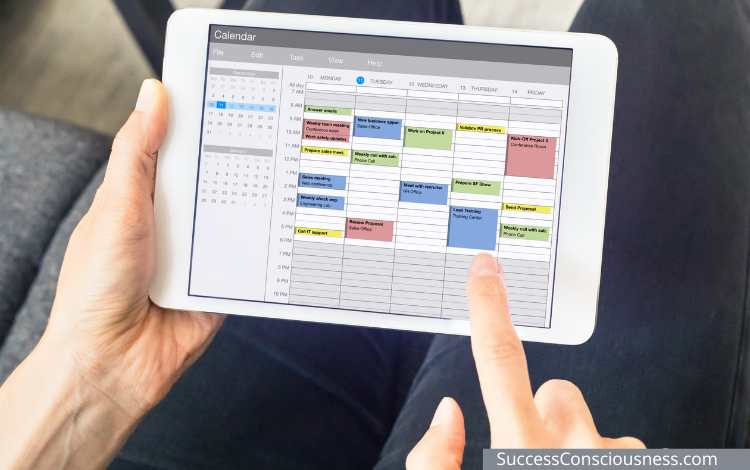
Time management is an essential ability that helps people prioritize work, meet deadlines, and accomplish goals in a productive and personal way. For projects to be finished on time and within budget, good time management is crucial in project management.
To prevent delays and maximize productivity, it entails carefully planning, monitoring during the project, and carefully allocating time to different project activities.
There are effective tools that help with project time management. Project managers may quickly view the full project plan by viewing a visual timeline through Gantt charts of activities, deadlines, and dependencies. This visibility aids in task balance, spotting any bottlenecks, and making necessary plan adjustments.
Browse our online courses on meditation, positive thinking, overcoming procrastination, confidence, and freedom from distractions.
Project managers may improve their time management skills and eventually produce more successful project outcomes through the use of Gantt charts.
Understanding Time Management Strategies
Gantt charts are graphical tools that are used in project management to show the timeline for a project. They show the start and finish dates, durations, and dependencies between jobs as they are displayed along a timeline.
Gantt charts were first employed in industrial contexts, but they are now widely utilized in many other disciplines to manage complicated projects. They are crucial for efficient time management and project coordination because of their capacity to offer a clear overview of project progress and timetables.
Impact of Gantt Charts on Time Management
The ability to see project activities in a clear and visual manner makes Gantt charts an essential tool for time management. These charts give a thorough understanding of the project schedule by showing the beginning and ending dates, durations, and any relationships between activities.
Monitoring progress, allocating resources effectively, and understanding the workflow are all made simpler by this visual representation.
The capacity of Gantt charts to assist in setting reasonable deadlines and milestones is one of their main advantages. Through task-specific delegation, project managers may more precisely predict the amount of time needed for each activity in the project.
This thorough preparation guarantees that dates are both reachable and in accordance with the overall objectives of the project. As they act as checkpoints that measure progress and sustain momentum throughout the project’s lifetime, clearly defined milestones are equally crucial.
Gantt charts also help with proactive time management by showing possible obstacles and probable delay spots. Owing to this foresight, project managers may make necessary adjustments to plans, which helps the project stay on schedule and fulfill deadlines, eventually resulting in a successful project completion.
Expert Tips for Effective Time Management
Effective time management relies on several key strategies and tools to help you stay on track and achieve your goals:
Planning and Prioritization
- Break Down Projects into Manageable Tasks: Divide large projects into smaller, actionable tasks to make them more manageable and less overwhelming.
- Prioritize Tasks Based on Urgency and Importance: Focus on tasks that are both urgent and important, ensuring critical deadlines are met.
- Estimate Task Durations Accurately: Use historical data and expert judgment to predict how long each task will take, avoiding overly optimistic or pessimistic estimates.
Scheduling
- Set Start and End Dates for Tasks: To keep your timetable organized, specify exactly when each job should start and finish.
- Allocate Resources Effectively: Give each job the appropriate personnel and resources, taking into account their qualifications and availability.
- Manage Dependencies Between Tasks: Identify and map out dependencies to guarantee that actions are executed in the proper order and prevent delays caused by dependent activities.
Monitoring and Adjusting
- Track Progress and Update Charts Regularly: Continuously monitor task completion and update the chart to reflect current status, ensuring accurate tracking.
- Identify and Address Bottlenecks: Immediately recognize any delays or problems that might obstruct development and take immediate corrective action.
- Adjust Timelines Based on Project Changes or Delays: Keep the project moving forward by being adaptable and prepared to make necessary revisions to the schedule to account for unanticipated delays or changes.
Expert Tips for Effective Time Management
Implementing these strategies can significantly enhance productivity and ensure successful project completion:
- Set Clear Goals: Clearly defined goals provide direction and a benchmark for success.
- Use Time Management Tools: Utilize tools such as to-do lists, calendars, and project management software to organize and track tasks.
- Practice the Pomodoro Technique: Break work into intervals, traditionally 25 minutes, separated by short breaks, to maintain high levels of focus and productivity.
- Eliminate Distractions: Create a workspace free from interruptions to maintain concentration and efficiency.
- Review and Reflect: Regularly review your progress and reflect on what strategies are working or need adjustment.
Common Mistakes to Avoid
Adding Too Much Detail
A chart that has too much detail may be crowded and hard to read. To preserve clarity and usefulness, concentrate on important activities and deadlines.
Ignoring Task Dependencies
Task dependencies should be considered to avoid scheduling conflicts and delays. Every dependency should be properly defined to keep the project schedule reasonable.
By avoiding these frequent blunders, you may keep your time management strategies effective, especially in managing time and tracking project progress. Maintaining project flow and increasing overall efficiency may be achieved by keeping the chart straightforward and clearly denoting job relationships.
Conclusion
Effective time management is extremely helpful for organizing projects and managing time efficiently. They aid project managers in setting reasonable deadlines, allocating resources, and making necessary adjustments to plans by offering a clear visual timeline of activities and dependencies.
Making good use of charts may boost output considerably and guarantee project success.
About the Author
Joyce Veloso is an avid reader by day and a social media enthusiast by night. Joyce has a bit of passion for staying up-to-date on the latest trends on the internet. It’s all about blending the best of both books and bytes!

